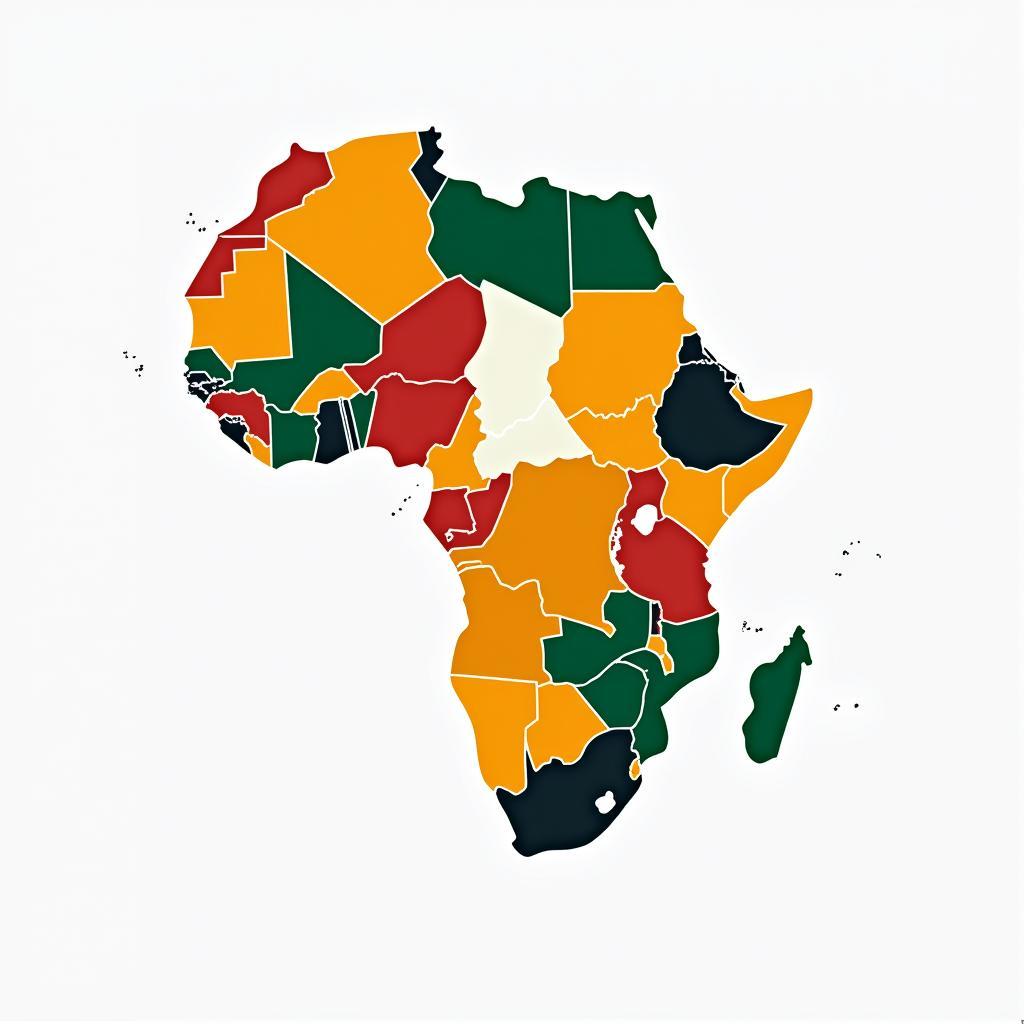African Climate and Forest and Wildlife Resources: A Detailed Look
Africa is a continent renowned for its diverse landscapes, ranging from arid deserts to lush rainforests. This incredible geographical range supports an equally impressive array of plant and animal life, making Africa a treasure trove of biodiversity. However, the delicate balance of its climate, forests, and wildlife is facing increasing pressure from human activities and global climate change.
The Tapestry of African Climates: From Arid to Tropical
Africa’s climatic diversity is a defining characteristic, influencing the distribution of its forests, wildlife, and human populations. The continent straddles the equator, resulting in a largely tropical climate. However, variations in altitude, proximity to the ocean, and wind patterns create a spectrum of climatic zones.
- The Sahara Desert, the world’s largest hot desert, dominates North Africa, characterized by extreme temperatures and scarce rainfall.
- Moving southward, the Sahel region presents a semi-arid zone, a transition between the desert and the savannas, marked by unpredictable rainfall and frequent droughts.
- Central Africa is home to the Congo Basin, the world’s second-largest rainforest, experiencing high rainfall and humidity year-round.
- Southern Africa presents a varied landscape with deserts, grasslands, and temperate forests, experiencing distinct wet and dry seasons.
Forests of Africa: Guardians of Biodiversity and Resources
Africa’s forests are not just breathtaking landscapes but also critical ecosystems, supporting a wealth of biodiversity and providing essential resources for millions of people.
The Congo Basin Rainforest: A Global Treasure Under Threat
Spanning six countries in Central Africa, the Congo Basin is the second-largest rainforest globally, after the Amazon. It’s a biodiversity hotspot, home to 10,000 plant species, 1,000 bird species, and 400 mammal species, many found nowhere else on Earth.
- Gorillas, forest elephants, okapis, and chimpanzees are just a few iconic species that rely on this dense forest ecosystem. However, deforestation due to logging, mining, and agricultural expansion poses a significant threat to the Congo Basin’s future.
The Miombo Woodlands: A Mosaic of Trees and Grasslands
Covering vast areas of Southern and East Africa, the Miombo woodlands are characterized by their unique tree species, adapted to survive seasonal droughts and fires. These woodlands support a diverse range of wildlife, including lions, leopards, elephants, and numerous bird species.
- Local communities rely on the Miombo woodlands for timber, food sources, and medicinal plants. Sustainable management practices are crucial to ensure the long-term health of this ecosystem.
African Wildlife: A Spectacular Display of Adaptation and Resilience
Africa’s diverse habitats are home to some of the world’s most iconic wildlife, each species uniquely adapted to its environment.
The Savannas: Kingdoms of Grazers and Predators
The vast savannas of East Africa are renowned for their incredible concentrations of large mammals.
- Wildebeest migrations, lions stalking their prey, and elephants roaming across the plains create a spectacle that draws visitors from all corners of the globe.
The Deserts: Life on the Edge of Extremes
Even in Africa’s harshest environments, like the Sahara and Namib deserts, life finds a way.
- Desert-adapted elephants, fennec foxes with their large ears for heat dissipation, and the elusive desert rhino are testaments to the power of adaptation. However, these species are increasingly vulnerable to the impacts of climate change and habitat loss.
Protecting Africa’s Natural Heritage for Future Generations
The interconnectedness of Africa’s climate, forests, and wildlife is undeniable. Climate change, deforestation, and poaching are just a few challenges threatening the delicate balance of these ecosystems.
- Sustainable forest management practices, wildlife conservation efforts, and addressing climate change are crucial for the long-term well-being of both people and nature in Africa.
By understanding the importance of these natural resources and working together to protect them, we can ensure that future generations inherit a continent as vibrant and diverse as the Africa we know today.
FAQ
What is the climate like in Africa?
Africa experiences a wide range of climates, from the arid Sahara Desert to the lush Congo Basin rainforest. The continent is largely tropical due to its position straddling the equator, but variations in altitude, proximity to the ocean, and wind patterns create diverse climatic zones.
What are some of the threats to Africa’s forests and wildlife?
Deforestation due to logging, mining, agricultural expansion, and climate change are major threats to Africa’s forests. Wildlife faces challenges from poaching, habitat loss, and human-wildlife conflict.
Why are Africa’s forests important?
Africa’s forests are crucial for biodiversity, providing habitat for countless plant and animal species. They also play a vital role in regulating climate, preventing soil erosion, and providing resources for local communities.
How can I help protect Africa’s natural heritage?
You can support organizations working in conservation and sustainable development in Africa. Raising awareness about the importance of these ecosystems and reducing your environmental footprint also contribute to their protection.
Need help planning your African adventure?
Contact us:
Phone Number: +255768904061
Email: kaka.mag@gmail.com
Address: Mbarali DC Mawindi, Kangaga, Tanzania.
We have a dedicated team available 24/7 to assist you!


